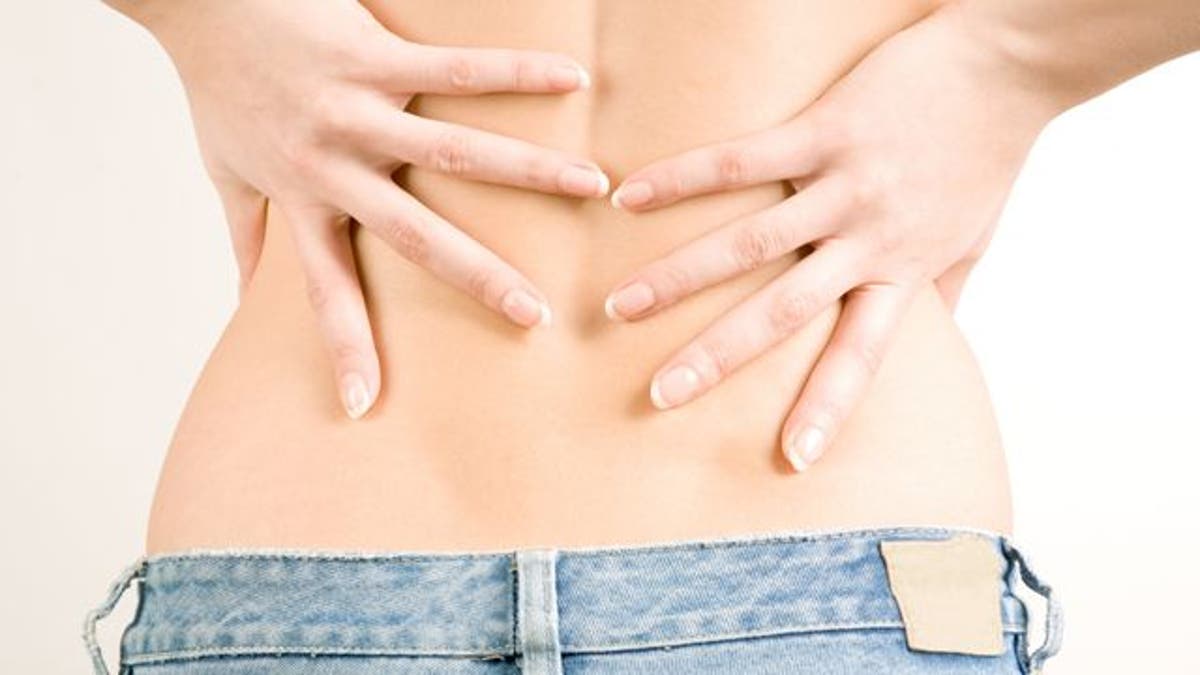
Picking up your baby or toddler, lifting him or her in and out of the crib or car seat, and multitasking with your baby firmly planted on your hip can put some serious strain on your back. Yet the problem actually starts in pregnancy, as the weight of your baby forces your stomach to pull forward, which in turn causes compression in the spine. Plus, your ligaments and joints are looser and your abdominals weaker.
“The whole system just sets you up for back pain,” said Jennifer T. Gentile, physical therapist at Columbia Orthopaedics Sports Therapy, Columbia Doctors Midtown in New York City. And after giving birth, your posture doesn’t automatically bounce back. “When you pick up the baby, you tend to go right back into that posture.”
Back strain is inevitable, but there are some simple ways you can strengthen your back, avoid injury and keep up with the daily rigors of motherhood.
Stand straight
The best way to re-align your spine after childbirth and take the arch out of your lower back is to slightly bend your knees when standing. Contracting your stomach muscles also helps to stabilize your pelvis.
Switch hips
Holding your baby on one hip all the time is a habit, but when you do this, “you’re throwing your spine into a different curve,” Gentile said. So every time you pick up your baby, keep your spine balanced by switching sides.
Work your abs
Sure, your abdominal muscles are stretched out, but strengthening them can do wonders for your lower back. Core and abdominal classes geared for the postpartum mom or mommy and yoga or Pilates classes are great options, but be sure to get the green light from your doctor to start exercising again.
Lift weights
Forty percent of your spine’s support comes from the muscles around the spine – not the bones, according to Dr. David Hanscom, an orthopedic spine surgeon and author of Back in Control. And the stronger you are, the less stress will be on your back. Weight bearing exercises with free weights, weight machines or kettlebells are all good ways to strengthen your legs and back.
Put your baby down correctly
Bending forward, reaching and twisting to put your baby in the crib or car seat puts a ton of pressure on your back and can even break down the discs, according to Hanscom. To offset some of the strain, align your body with the crib’s railing, keep your baby close to your body and your back straight and then try to bend at the knees rather than at the waist as you put your baby down.
Instead of reaching in to put your baby in the car seat, put your baby in your lap, sit down, and then put your baby into the seat. If you have a toddler, have her climb in and out. “It takes more time but really the amount of trauma that you save your back is immeasurable,” Hanscom said.
Drink milk
Breastfeeding can put you at risk for osteoporosis later on in life if you’re not getting enough calcium today. “If you don’t have it in your diet, it comes right out of your skeleton,” Hanscom said. “And once it comes out of your skeleton, it does not go back.” Aim for 1,000 milligrams of calcium a day or 1,500 to 2,000 miligrams if you’re breastfeeding. Milk, yogurt and cheese are good choices, but be sure to add a supplement if it’s not enough.
Get more sleep
“The essence of chronic pain treatment is sleep,” Hanscom said. In fact, pain sensitivity decreases with more sleep, according to a recent study published in the journal SLEEP. Getting enough sleep can be tough when you have little ones, but do your best now to fit in an extra hour or two of shut eye and know that it will get better as your kids get older.
